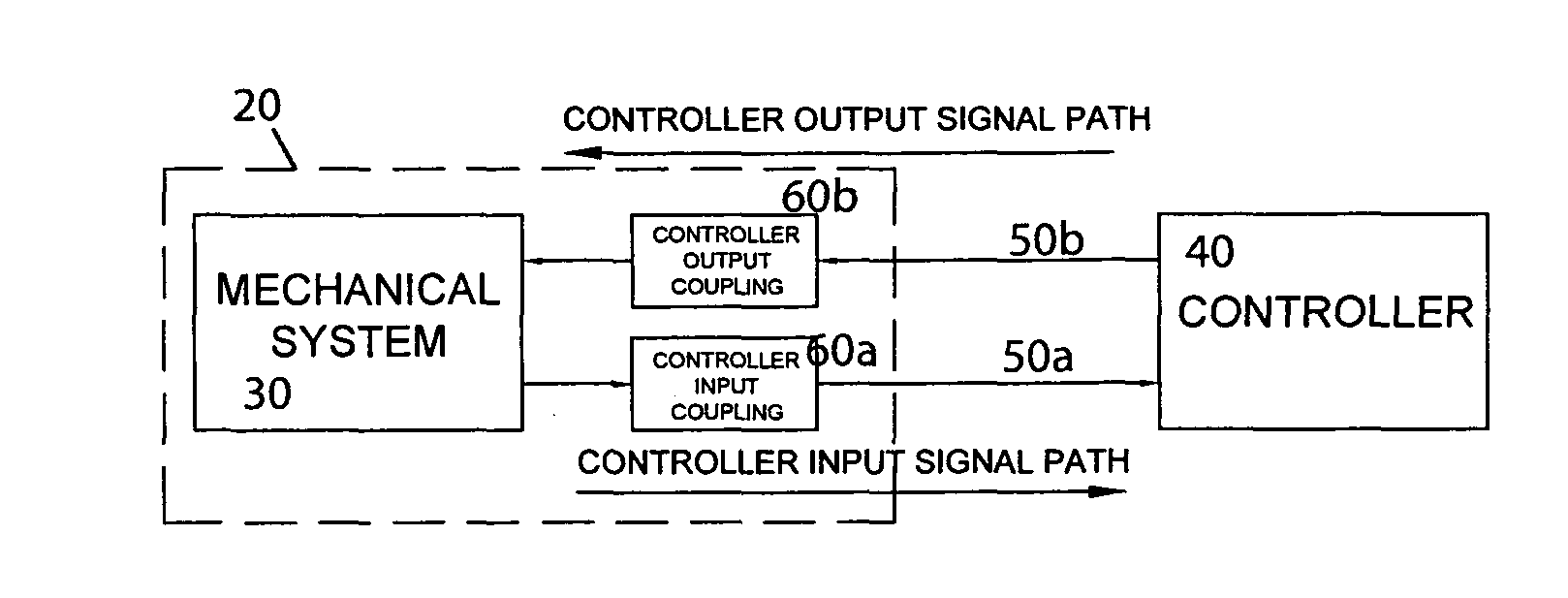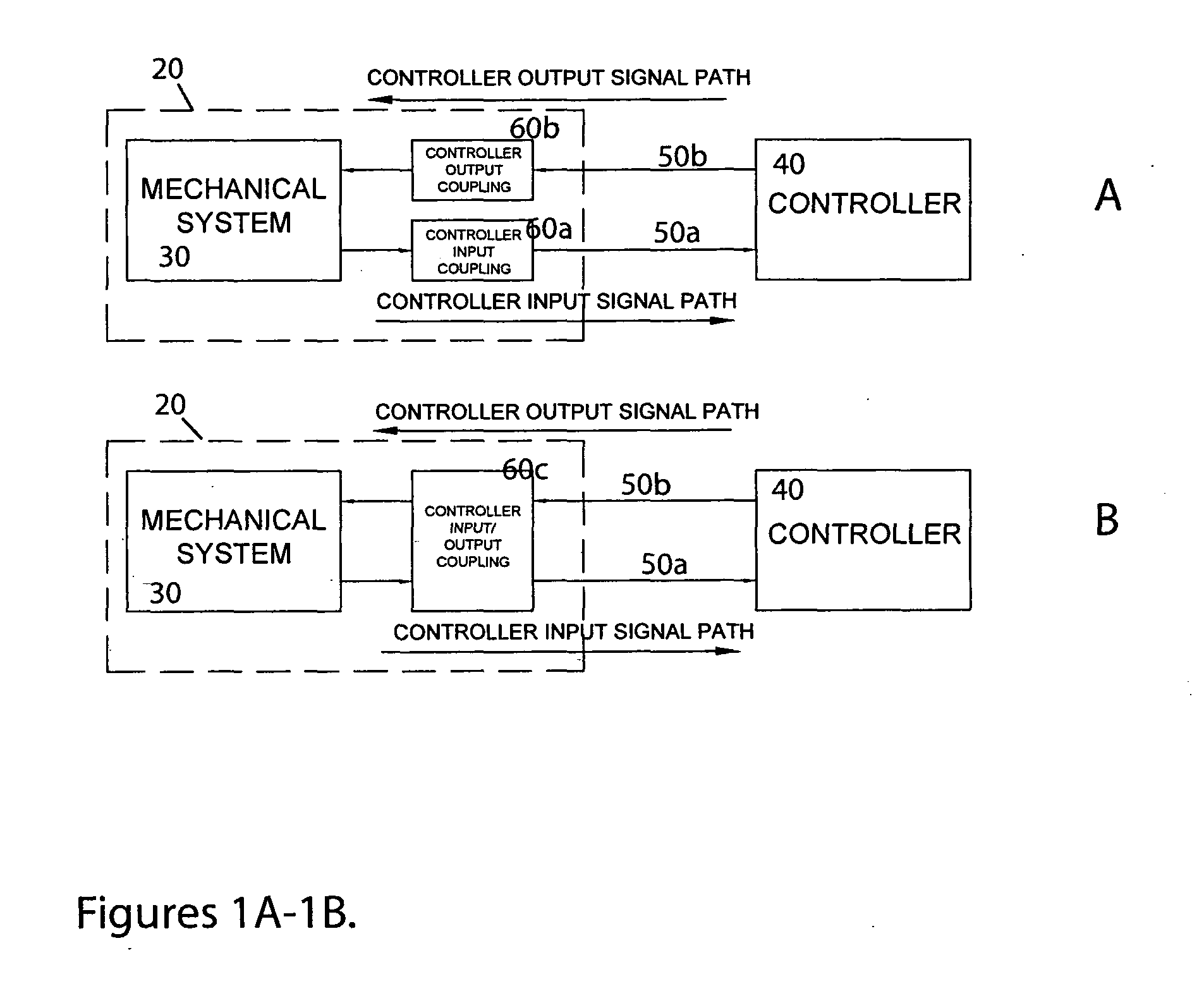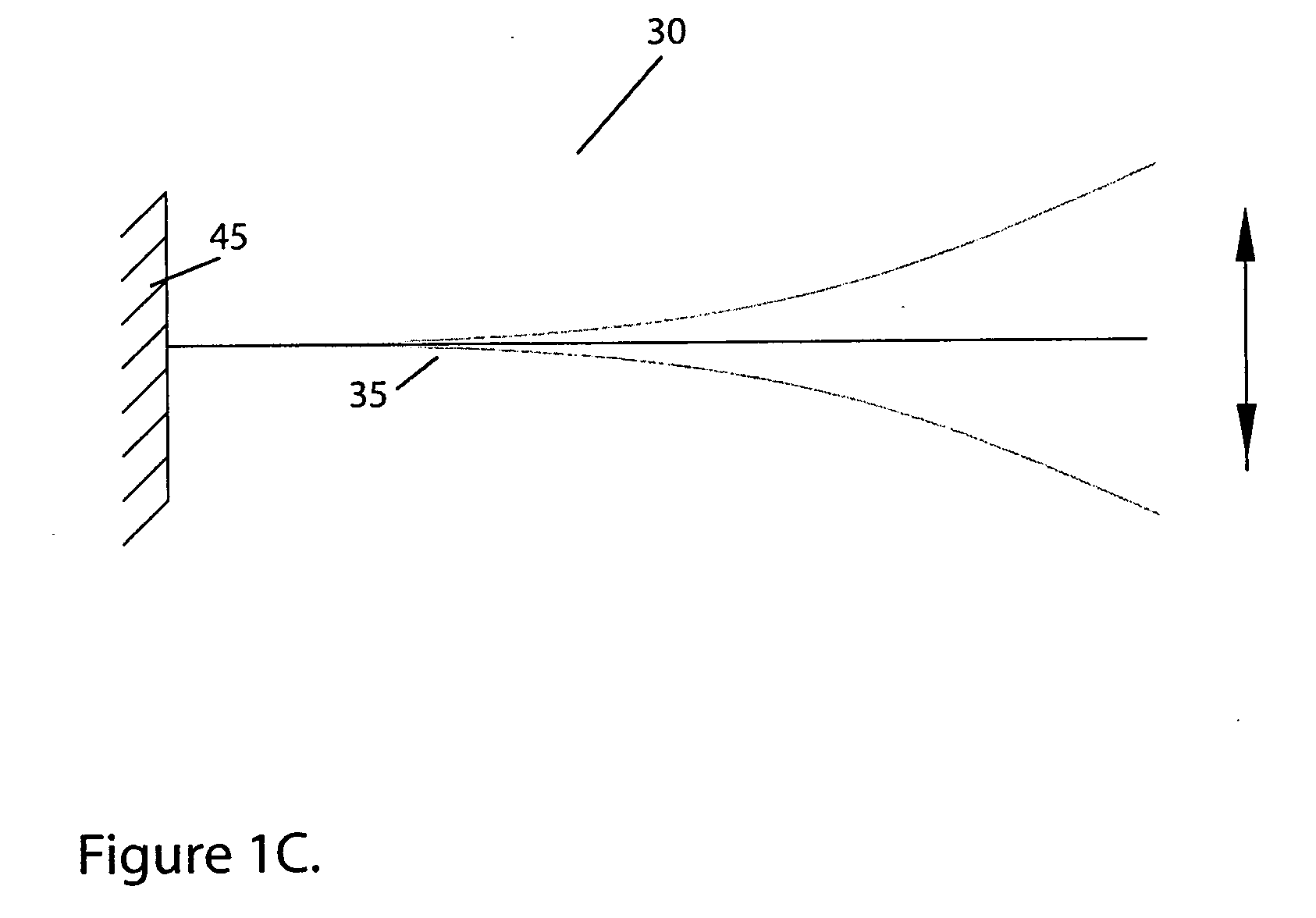Mechanical oscillator
a mechanical oscillator and oscillator technology, applied in the field of mechanical oscillator devices, can solve the problems of more sophisticated devices that require expensive digital hardware, poor time response and noise susceptibility of negative-feedback type controllers, and relatively limited fundamental advances in the design of mechanical oscillator systems, so as to improve the control of primary stationary vibrations and small propagating vibration components.
- Summary
- Abstract
- Description
- Claims
- Application Information
AI Technical Summary
Benefits of technology
Problems solved by technology
Method used
Image
Examples
Embodiment Construction
[0047]FIGS. 1A and 1B show, at a most general level, the structure of a mechanical oscillator device 10 embodying the present invention. In each case, the mechanical oscillator device comprises a mechanical structure 20 which includes a mechanical system 30, connected to a controller 40. The mechanical system 30 is the functional part or active region of the mechanical structure 20, which lends functionality to a particular implementation of the mechanical oscillator device 10. Its exact-nature depends on the desired functionality of that mechanical oscillator device, but it may be a one, two or three-dimensional mechanical element with one or more resonant mode(s), that is, a mechanical element which responds preferentially at one or more frequencies, for example, a macro, micro or nano-mechanical beam, cantilever, ring or membrane. FIG. 1C illustrates a simple schematic example of a typical mechanical system 30: a cantilever 35 which is singly clamped to a support 45 and which may...
PUM
 Login to View More
Login to View More Abstract
Description
Claims
Application Information
 Login to View More
Login to View More - R&D
- Intellectual Property
- Life Sciences
- Materials
- Tech Scout
- Unparalleled Data Quality
- Higher Quality Content
- 60% Fewer Hallucinations
Browse by: Latest US Patents, China's latest patents, Technical Efficacy Thesaurus, Application Domain, Technology Topic, Popular Technical Reports.
© 2025 PatSnap. All rights reserved.Legal|Privacy policy|Modern Slavery Act Transparency Statement|Sitemap|About US| Contact US: help@patsnap.com



